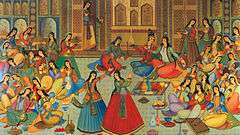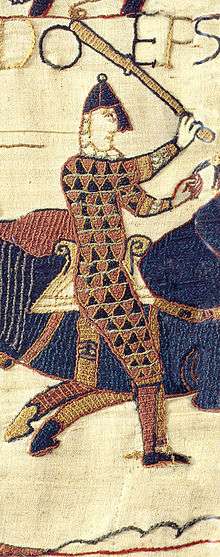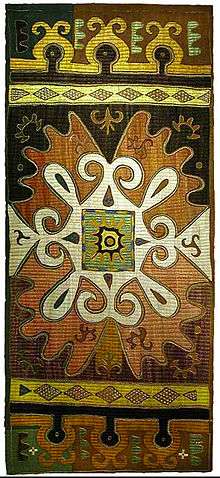Persian embroidery
Persian embroidery is one of the Persian arts. It uses mostly floral motifs, especially Persian figures, animals, and patterns related to hunting. Persian embroidered women's trouserings, also known as "Gilets Persans", have rich patterns; these were in fashion until the late 18th century. The designs are always of diagonal, parallel bands filled with floral ornamentation.
| Iranian art |
|---|
 |
| Visual arts |
| Decorative arts |
| Literature |
| Performance arts |
| Other |
History
Sassanid era
Persian embroidery existed from the ancient times and at least from the time of the Sassanids. Numerous designs are visible on rock sculptures and silverware of that period, and have been classified by Professor Ernst Herzfeld. Patterns on the coat of Chosroes II at Taq-e Bostan are in high relief; they may represent embroidery. Roundels, animals, and other familiar motives of Sassanid art were also used.
Peculiarities
The earlier Persian embroideries are almost all of type in which the design covers the entire work. The reverse is mainly true of the later pieces, in which the plain-coloured background is equally as important as the varied silks of the needlework. Earlier pieces are almost all similar in design to one or other of the many types of carpets. These are mainly worked in darning-stitch on cotton or loosely woven linen, while occasional examples are in cross-stitch or tent-stitch. Carpet-weaving was mainly done by men, and embroidery by women; members of the same family worked at both trades.
References
- Brief guide to Persian embroideries. Victoria and Albert Museum, His Majesty's stationery Office, London 1950.


